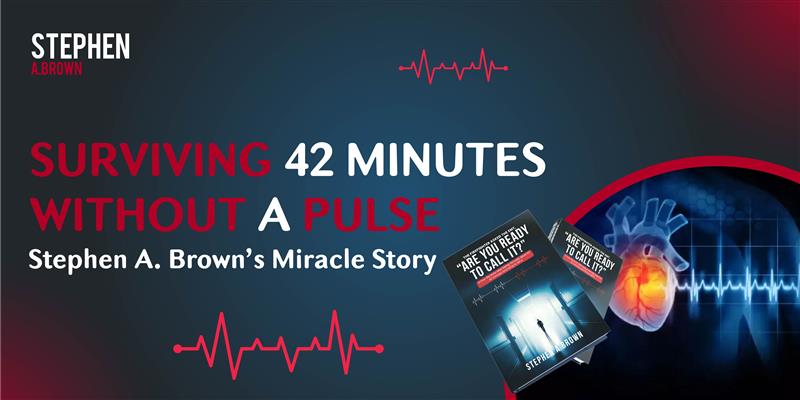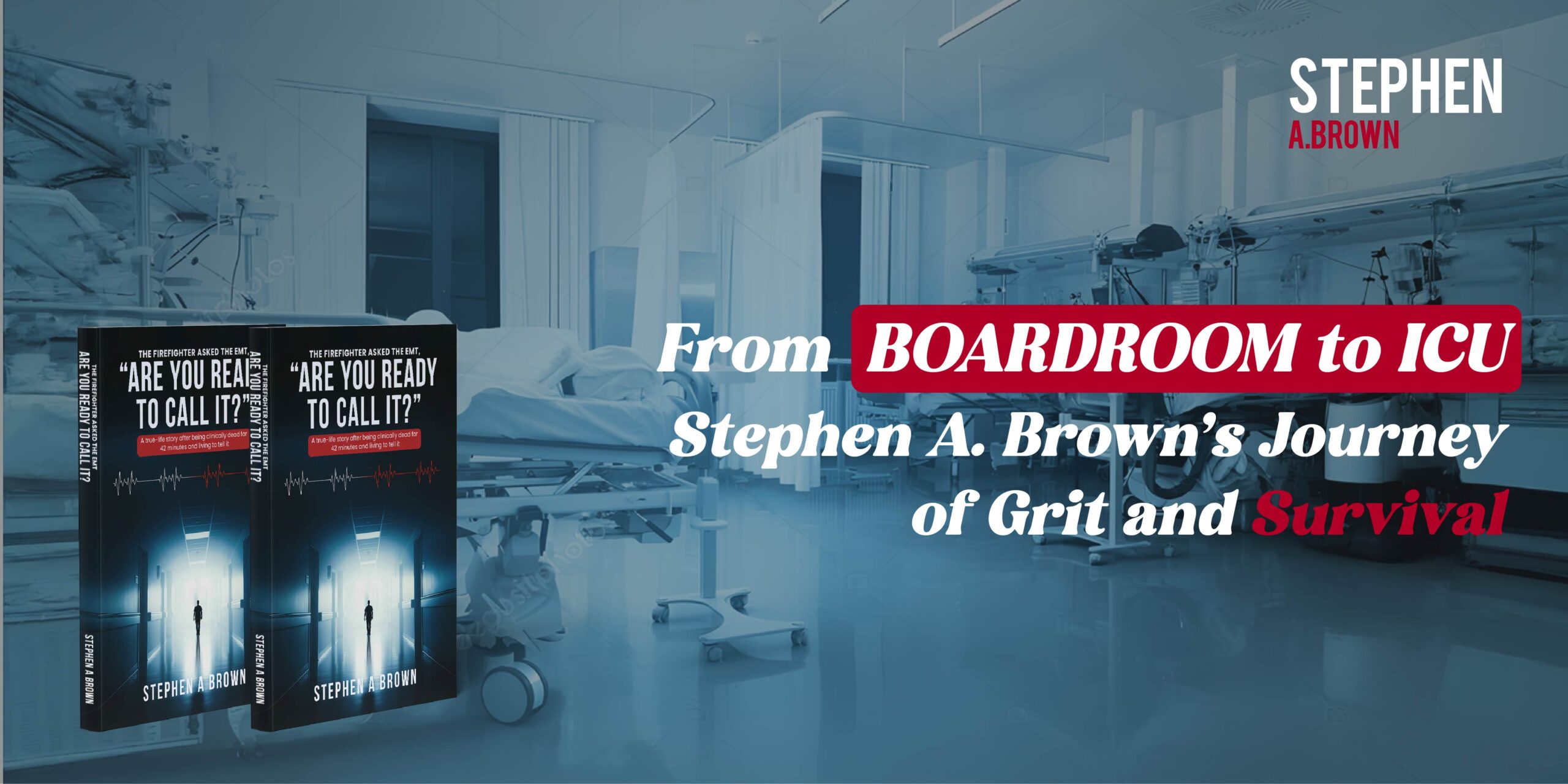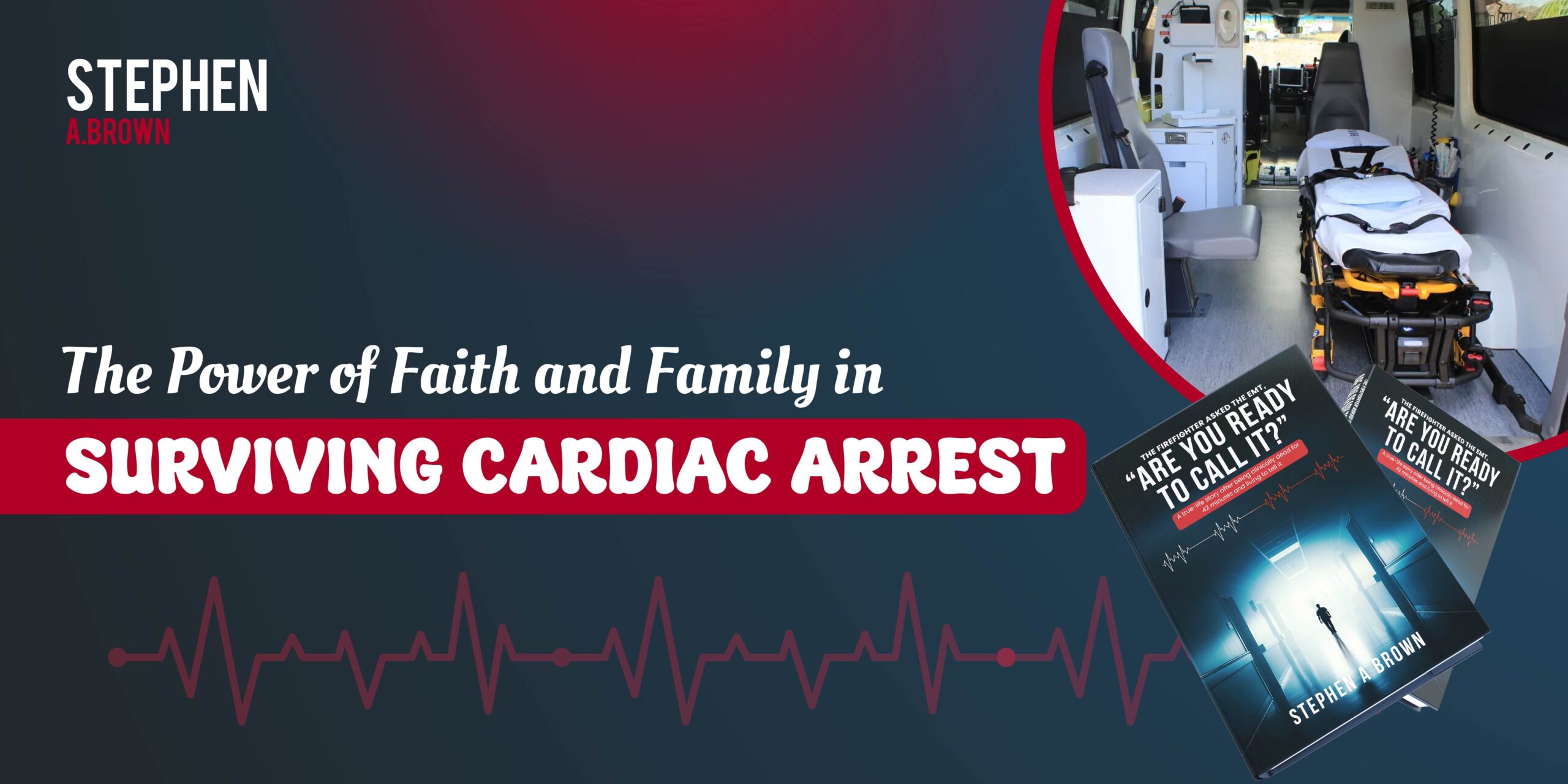Some stories make you stop, breathe deeply, and reconsider how fragile life really is. Stephen A. Brown’s journey is one of those stories. His book Are You Ready to Call It? tells what it means to be clinically dead and yet return to life against all odds. His survival is not just a medical case. It’s a deeply human account of faith, family, and the relentless effort of first responders who refused to give up.
This is not fiction. It’s not an exaggerated tale. It’s the truth of a man who experienced surviving 42 minutes without pulse and lived to write about it.
The Night Everything Changed
On June 29, 2016, Stephen collapsed in his own home. One moment he was watching a ballgame, the next he was breathing his last, silent, no heartbeat. Pat had to fill a role that no wife has ever been prepared to fill. She immediately called 911, followed what the dispatcher told her, and started CPR on her spouse of 40 years.
Even for the professionals, CPR is grueling. Still, Pat continued singlehandedly until the first officer reached. Minutes later, firefighters and paramedics joined her. They shocked Stephen six times. He flatlined three times. The normal practice after such a long effort is to ask, “Are you ready to call it?” But one paramedic refused. Her words, “Not yet”, changed the course of Stephen’s life.
It was the beginning of surviving 42 minutes without pulse, a miracle no one thought possible.
Clinically Dead, but Not Gone
For more than forty minutes, there was no heartbeat. Clinically speaking, Stephen was dead. His brain was being kept alive only by continuous chest compressions. Many would not have continued, but the team of first responders rotated in and out, refusing to let him slip away.
This is where the power of real survival stories becomes clear. They remind us that behind every number or medical term is a human being with loved ones waiting in fear. Pat stood nearby, her heart breaking, not knowing if her husband would ever return. Their daughter, Stacey, a doctor herself, rushed to the scene, understanding exactly how slim the chances were. And still, the fight went on.
Against the odds, Stephen’s heart began to beat again.
Eight Days of Uncertainty
Reviving someone is only the first step. What followed were eight long days in the hospital, most of which Stephen cannot remember. His family, however, remembers every detail. Machines breathed for him. Doctors debated what damage might linger. Would he wake up? Would his brain recover after so much oxygen deprivation?
Through journals kept by his wife and children, Stephen later pieced together this chapter of his life. The fear, the waiting, the fragile hope, all of it is written in his book. For his family, those eight days felt like years. Yet slowly, he began to return. Words, smiles, recognition. Signs that his mind and spirit had survived along with his body.
To them, surviving 42 minutes without a pulse was not only about Stephen’s body recovering, but also about his spirit holding on when science said he shouldn’t have.
A New Understanding of Life
Surviving 42 minutes without a pulse changed Stephen forever. He admits he once ignored warning signs from his heart. He had trusted too much in feeling “fine.” The collapse taught him that health is not always visible, and denial can be dangerous.
But more than the medical lessons, his story carries something deeper. It’s about gratitude, for his wife who refused to stop, for the paramedic who said “Not yet,” and for the many strangers who became heroes that night.
In his book, Stephen often struggles to find words bigger than “thank you.” He knows those words are too small for the gift he was given. That tension, between awe and humility, is what makes this clinical death story so moving.
Why His Story Matters
We have heard many survival stories before. But this one strikes a unique note of both abnormality and normality. Stephen was not in a hospital bed when it happened. He was watching a ball game at home, like millions of others. His rescuers were not superhuman. They were neighbors, police officers, firefighters, and emergency medical technicians who were persistent and caring.
This is why surviving 42 minutes without pulse matters beyond just one family. This serves as a reminder that life can change in an instant, courage can come through the most unexpected ways, and that even in the face of dire odds, there is always room for miracles.
A Story Worth Sharing
Today, Stephen is alive to tell his own story, something he once thought impossible. His book Are You Ready to Call It? is not just about dying and coming back. It’s about love, resilience, and the extraordinary strength of ordinary people.
Surviving 42 minutes without pulse is almost unimaginable. Yet Stephen A. Brown did. His clinical death story is not just his, it belongs to everyone who needs to believe in second chances, in persistence, and in the quiet heroism of family and strangers alike. For anyone who doubts whether miracles still happen, this story, of surviving 42 minutes without pulse, is proof.



